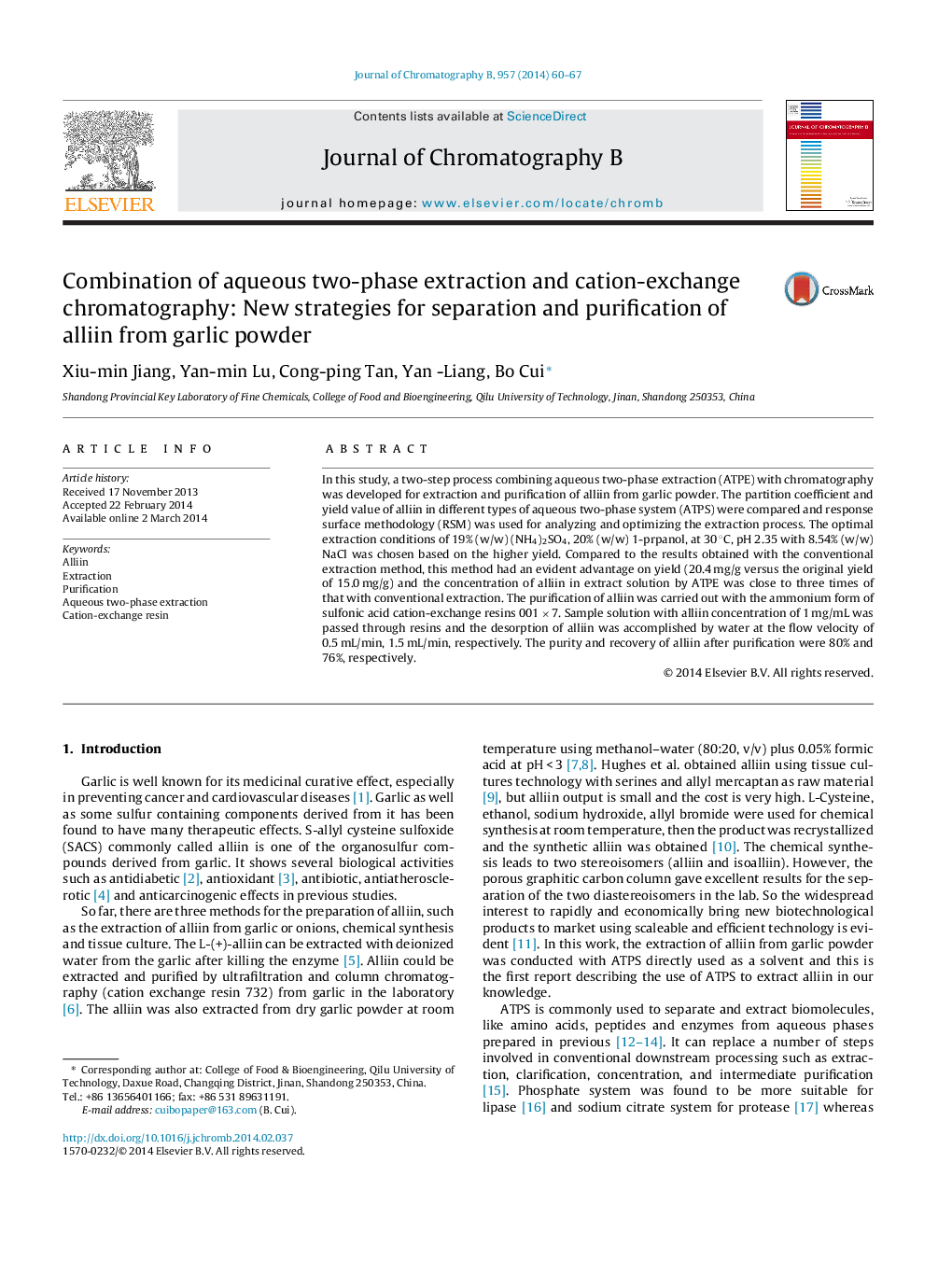| Article ID | Journal | Published Year | Pages | File Type |
|---|---|---|---|---|
| 1212464 | Journal of Chromatography B | 2014 | 8 Pages |
•ATPS was first used as a solvent to extract alliin from garlic powder.•Compared with traditional extraction method, aqueous two-phase extraction (ATPE) not only improved the alliin yield but also concentrated extract solution of alliin to a large extent.•Chromatography was used following by ATPE to purify alliin, the combination of them provided a rapid and effective method for alliin extraction and purification.•In this paper, cation-exchange resins 001 × 7 was converted to NH4+ form.
In this study, a two-step process combining aqueous two-phase extraction (ATPE) with chromatography was developed for extraction and purification of alliin from garlic powder. The partition coefficient and yield value of alliin in different types of aqueous two-phase system (ATPS) were compared and response surface methodology (RSM) was used for analyzing and optimizing the extraction process. The optimal extraction conditions of 19% (w/w) (NH4)2SO4, 20% (w/w) 1-prpanol, at 30 °C, pH 2.35 with 8.54% (w/w) NaCl was chosen based on the higher yield. Compared to the results obtained with the conventional extraction method, this method had an evident advantage on yield (20.4 mg/g versus the original yield of 15.0 mg/g) and the concentration of alliin in extract solution by ATPE was close to three times of that with conventional extraction. The purification of alliin was carried out with the ammonium form of sulfonic acid cation-exchange resins 001 × 7. Sample solution with alliin concentration of 1 mg/mL was passed through resins and the desorption of alliin was accomplished by water at the flow velocity of 0.5 mL/min, 1.5 mL/min, respectively. The purity and recovery of alliin after purification were 80% and 76%, respectively.
Graphical abstractFigure optionsDownload full-size imageDownload as PowerPoint slide
